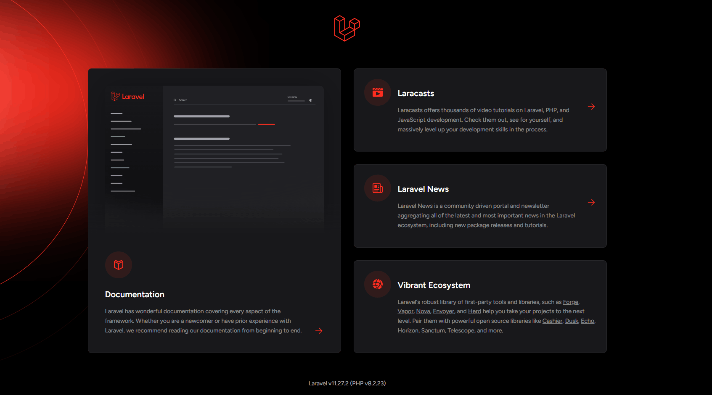AI in Education: Revolutionizing the Way We Learn
Read More


Title: The Importance of Employee Engagement: Strategies for Boosting Productivity and Retention
Introduction
Employee engagement is more than just a buzzword in today's corporate world—it's a crucial element for any organization's success. Engaged employees are not only more productive and innovative, but they are also more loyal, leading to reduced turnover rates. In contrast, disengaged employees can negatively impact morale, productivity and the bottom line. This blog will explore the importance of employee engagement, its benefits, common causes of disengagement, and strategies to foster a more engaged workforce.
What is Employee Engagement?
Employee engagement refers to the emotional commitment an employee has to their organization and its goals. Engaged employees are enthusiastic about their work, take pride in their contributions and are motivated to go above and beyond their job descriptions. They are more likely to stay with the company, advocate for its products and services and contribute positively to the organizational culture.
Benefits of Employee Engagement:
1. Increased Productivity: Engaged employees are more productive because they are motivated and committed to their work. They take initiative, find innovative solutions to problems and are more likely to collaborate effectively with colleagues.
2. Higher Retention Rates: Engaged employees are more likely to stay with their organization, reducing turnover rates and the costs associated with hiring and training new employees. High retention also helps maintain organizational knowledge and stability.
3. Improved Customer Satisfaction: Engaged employees tend to provide better customer service as they are more enthusiastic and committed to delivering quality. This can lead to higher customer satisfaction and loyalty.
4. Enhanced Company Culture: When employees are engaged, they contribute positively to the workplace culture, creating a more supportive and motivating environment. A positive culture can attract top talent and make the organization a more desirable place to work.
Common Causes of Disengagement
Understanding the factors that lead to employee disengagement is essential for developing effective engagement strategies. Some common causes of disengagement include:
1. Lack of Recognition and Feedback: Employees who feel that their efforts go unnoticed or unappreciated are more likely to become disengaged. Regular feedback and recognition are essential for keeping employees motivated and engaged.
2. Limited Opportunities for Growth: Employees who see no opportunities for career advancement or skill development within their organization may become disillusioned and disengaged. They need to feel that their careers are progressing and that their employer supports their professional development.
3. Poor Work-Life Balance: A lack of work-life balance can lead to burnout, stress and disengagement. Employees who feel overwhelmed or unable to balance their personal and professional lives are less likely to be motivated and productive.
4. Toxic Work Environment: A negative or toxic work environment, characterized by poor leadership, lack of trust and inadequate communication can significantly impact employee morale and engagement.
5. Unclear Job Expectations: Employees who do not understand their roles, responsibilities, or goals may feel frustrated and disengaged. Clear communication and well-defined expectations are crucial for keeping employees focused and engaged.
Strategies for Improving Employee Engagement
To foster a more engaged workforce, organizations must implement strategies that address the causes of disengagement and promote a positive and motivating work environment. Here are some effective strategies for improving employee engagement:
1. Regular Feedback and Recognition
Providing regular feedback and recognition is one of the most effective ways to boost employee engagement. Employees need to know that their efforts are valued and that their contributions make a difference. Implementing a recognition program that highlights achievements, both big and small, can go a long way in motivating employees.
Implement a Recognition Program: Create a formal recognition program that rewards employees for their hard work and achievements. This can include employee of the month awards, spot bonuses or public acknowledgment during team meetings.
Provide Constructive Feedback: Feedback should be both positive and constructive, helping employees understand what they are doing well and where they can improve. Regular one-on-one meetings between managers and employees can provide opportunities for feedback and recognition.
2. Opportunities for Growth and Development
Employees are more likely to be engaged when they feel that their organization supports their professional growth. Providing opportunities for learning and development can help employees acquire new skills, advance in their careers and stay motivated.
Offer Training and Development Programs: Invest in training and development programs that help employees enhance their skills and knowledge. This can include workshops, seminars, online courses, and mentorship programs.
Encourage Career Advancement: Provide clear pathways for career advancement within the organization. This can involve promoting from within, offering stretch assignments, or providing opportunities for employees to take on new roles and responsibilities.
3. Promote Work-Life Balance and Flexibility
Promoting work-life balance is crucial for preventing burnout and keeping employees engaged. Offering flexible work arrangements and supporting employees' personal needs can help create a more balanced and motivated workforce.
Implement Flexible Work Policies: Allow employees to have flexible work schedules or remote work options, especially for those who may have family commitments or prefer a different work environment. Flexibility can help employees manage their personal and professional lives more effectively.
Encourage Time Off: Encourage employees to take time off to recharge and avoid burnout. Implement policies that promote the use of vacation days and support employees in taking time for themselves.
4. Foster a Positive Company Culture
A positive company culture is essential for employee engagement. It creates an environment where employees feel valued, respected and motivated to contribute to the organization's success.
Promote Open Communication: Encourage open and transparent communication between employees and management. Create channels for employees to share their ideas, feedback, and concerns. Regular town hall meetings or open-door policies can help foster a culture of openness and trust.
Build Team Spirit: Organize team-building activities and social events to help employees build strong relationships and foster a sense of belonging. A cohesive team is more likely to be engaged and motivated.
5. Measure and Track Employee Engagement
Measuring and tracking employee engagement is essential for understanding what drives engagement and identifying areas for improvement. Regular surveys and feedback mechanisms can provide valuable insights into employee satisfaction and engagement levels.
Conduct Employee Engagement Surveys: Use surveys to gather feedback from employees on various aspects of their work experience, such as job satisfaction, work environment, and leadership. Analyzing the survey results can help identify areas where engagement is lacking and where improvements are needed.
Implement Action Plans: Based on the survey results, develop action plans to address the identified issues and improve engagement.
Case Studies of Successful Engagement Initiatives
Case Study 1: Google’s Employee Engagement Strategy
Google is well-known for its innovative employee engagement practices. The company provides a range of perks and benefits, such as free meals, wellness programs, and flexible work arrangements, to create a positive work environment. Google also places a strong emphasis on employee development, offering various training programs and opportunities for career advancement. These initiatives have helped Google maintain high levels of employee engagement and attract top talent from around the world.
Case Study 2: Zappos’ Culture of Employee Engagement
Zappos, an online shoe and clothing retailer, is famous for its unique company culture and employee engagement strategies. The company emphasizes a culture of happiness and empowerment, encouraging employees to take ownership of their roles and contribute to the company's success. Zappos offers various engagement initiatives, such as team-building activities, recognition programs, and opportunities for growth and development. These efforts have helped Zappos create a highly engaged workforce and a strong company culture.
Conclusion
Employee engagement is a critical factor in an organization's success. Engaged employees are more productive, loyal, and committed to their work, leading to better business outcomes. By understanding the causes of disengagement and implementing effective engagement strategies, organizations can create a positive work environment that fosters motivation, productivity, and retention. Whether through regular feedback and recognition, opportunities for growth, or promoting work-life balance, investing in employee engagement can yield significant benefits for both employees and the organization as a whole.
By prioritizing employee engagement, organizations can build a strong, motivated, and dedicated workforce that drives long-term success and growth.
Recent posts form our Blog

![[FIXED] target class [role] does not exist in laravel 11](https://www.interviewsolutionshub.com/storage/blogs/images/1721121368Frontend design for your business (6).png)
![how to Integrate Stripe recurring payment into Laravel [2024]](https://www.interviewsolutionshub.com/storage/blogs/images/1713346975fronten preview.PNG)



0 Comments
Like 0